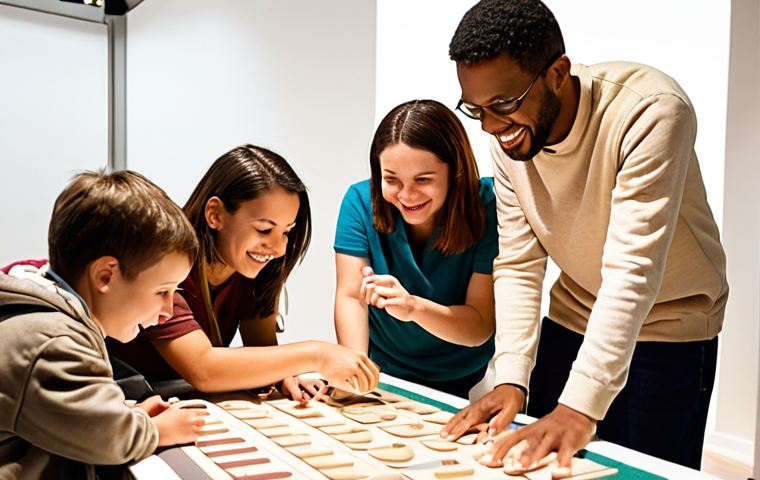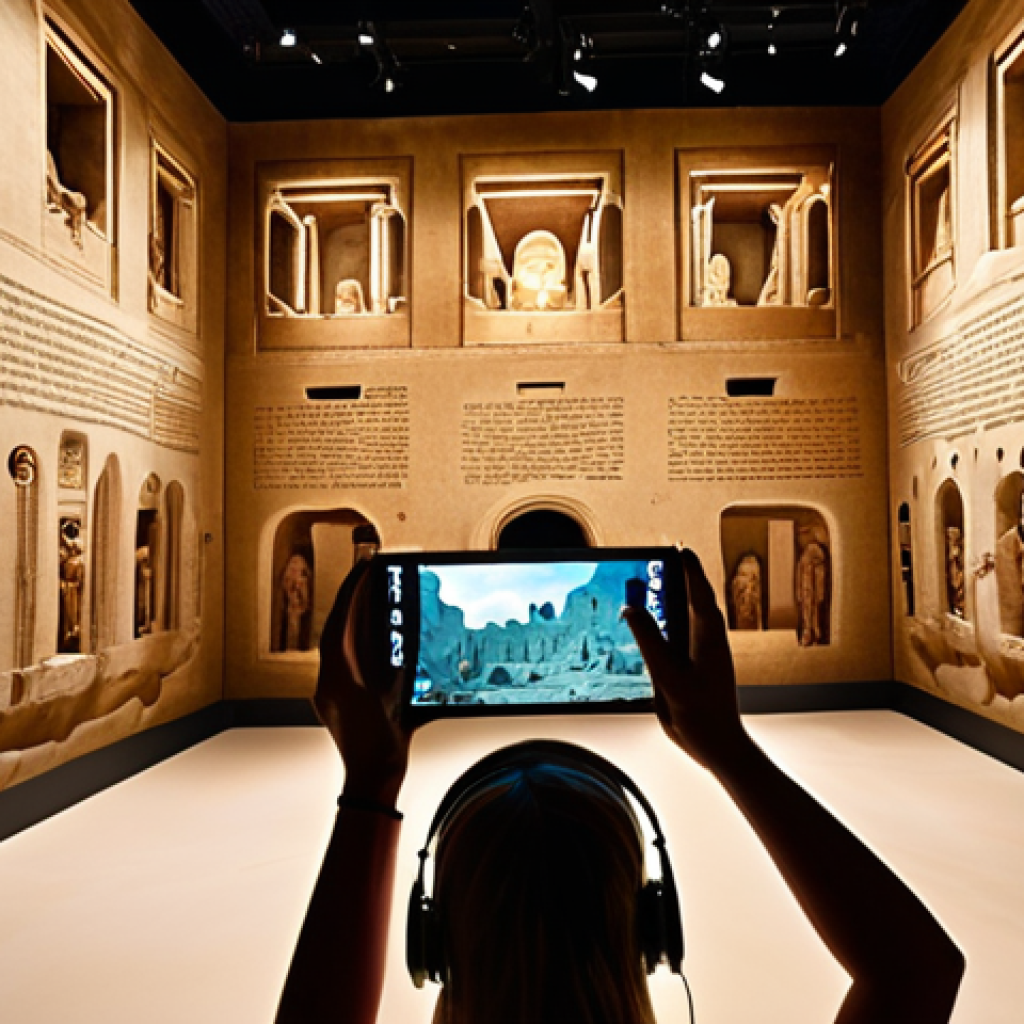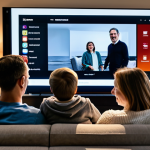Museums. They’re more than just buildings filled with old artifacts, aren’t they? I mean, stepping into one, you immediately feel this palpable sense of history, a quiet hum of stories waiting to be discovered.
But behind that serene facade, there’s a whirlwind of complex, dynamic work happening – the art of museum management. It’s not just about dusting display cases or cataloging new acquisitions anymore; it’s about navigating a rapidly evolving landscape.
We’re talking about embracing cutting-edge digital transformations, like creating immersive VR experiences that transport you to ancient Rome, or using AI to personalize your visit based on your interests.
The challenges are immense, from securing vital funding in uncertain times to ensuring these cultural hubs remain truly relevant and accessible for every single person in our diverse communities.
It’s a high-wire act, balancing preservation with innovation, tradition with future-proofing. What does it *really* take to keep these invaluable institutions thriving in the 21st century?
Let’s explore this accurately.
Museums. They’re more than just buildings filled with old artifacts, aren’t they? I mean, stepping into one, you immediately feel this palpable sense of history, a quiet hum of stories waiting to be discovered.
But behind that serene facade, there’s a whirlwind of complex, dynamic work happening – the art of museum management. It’s not just about dusting display cases or cataloging new acquisitions anymore; it’s about navigating a rapidly evolving landscape.
We’re talking about embracing cutting-edge digital transformations, like creating immersive VR experiences that transport you to ancient Rome, or using AI to personalize your visit based on your interests.
The challenges are immense, from securing vital funding in uncertain times to ensuring these cultural hubs remain truly relevant and accessible for every single person in our diverse communities.
It’s a high-wire act, balancing preservation with innovation, tradition with future-proofing. What does it *really* take to keep these invaluable institutions thriving in the 21st century?
Let’s explore this accurately.
Embracing Digital Frontiers in the Hallowed Halls

From my own perspective, having spent countless hours observing how cultural institutions are evolving, the most seismic shift I’ve witnessed is the digital revolution. It’s no longer about simply putting collections online; it’s about fundamentally rethinking how people engage with art, history, and science. I remember visiting a small, local history museum a few years back, and honestly, it felt a bit stagnant. Then, on a recent trip, I saw how they’d transformed. They had QR codes on exhibits leading to augmented reality overlays, letting you see an ancient tool being used in real-time or hear a historical figure’s recorded voice. It wasn’t just interesting; it was genuinely captivating. This isn’t just about flashy tech, though. It’s about meeting visitors where they are, understanding their expectations, and providing layers of engagement that weren’t possible before. It truly feels like walking into a living, breathing story, rather than just a static display.
Immersive Experiences: Beyond the Glass Case
Remember when a museum visit meant shuffling past rows of artifacts, maybe reading a tiny plaque if you squinted hard enough? Well, those days are fading fast, and frankly, thank goodness! Now, the real magic happens when museums start to fully leverage technology to pull you *into* the story. Think about it: virtual reality tours that let you wander through a meticulously reconstructed ancient city, or augmented reality apps that bring a dinosaur skeleton to life right before your eyes. I recently tried an exhibit that used haptic feedback in a glove, letting me ‘touch’ ancient pottery through a digital interface – the texture, the weight, it was all there! It’s not just about viewing; it’s about experiencing, feeling, and even interacting. This level of immersion creates a much deeper, more memorable connection with the subject matter, especially for younger generations who have grown up with interactive media. It genuinely turns passive observation into active participation, which is a game-changer for engagement and retention.
AI and Data: Personalizing Every Visit
This is where things get truly exciting, and a little bit sci-fi, but in the best way possible. The idea of AI in museums might sound abstract, but it’s becoming incredibly tangible. Imagine walking into a museum, and an AI-powered app on your phone, based on your past visits or declared interests, curates a personalized tour just for you. It might highlight works from artists you’ve favored, suggest historical periods you’ve enjoyed, or even recommend specific artifacts you might otherwise miss. I’ve personally seen prototypes that use facial recognition (with consent, of course!) to gauge visitor engagement, helping curators understand which exhibits are truly resonating. This data-driven approach isn’t about being intrusive; it’s about making each individual’s journey more relevant and profound. It allows institutions to tailor content and flow, ensuring that whether you’re a history buff, an art aficionado, or a curious newcomer, your time inside those walls feels uniquely yours, enhancing satisfaction and encouraging repeat visits.
Digital Preservation: Safeguarding Our Heritage
Beyond the glitz of interactive exhibits, there’s a quiet, incredibly vital role technology plays: digital preservation. For me, knowing that a museum isn’t just protecting physical artifacts but also creating high-resolution digital twins, 3D models, and comprehensive databases, offers immense comfort. It’s like creating an indestructible backup for humanity’s collective memory. If a priceless manuscript were to ever be damaged, or an ancient ruin succumb to time, its digital counterpart ensures its stories and details live on. I’ve watched documentaries showcasing the painstaking work of digitizing entire collections, from tiny insects to massive sculptures. This painstaking process, often involving advanced photogrammetry and scanning techniques, ensures that even the most fragile items can be studied, shared, and experienced globally, without ever being touched. It democratizes access to knowledge and creates a powerful, enduring legacy, far beyond the physical limitations of a building.
The Delicate Dance of Funding and Fiscal Health
If there’s one aspect of museum management that keeps directors awake at night, it’s undeniably money. I mean, we all love museums, but the reality is, they don’t run on good intentions alone. Securing the necessary funding in today’s unpredictable economic climate is a monumental task, one that requires a blend of shrewd financial acumen and passionate advocacy. I’ve heard stories from various museum professionals about the constant hustle – from writing grant applications that stretch for dozens of pages, to schmoozing with potential donors at black-tie galas. It’s a relentless pursuit of resources that are, more often than not, fiercely competitive and perpetually insufficient for the grand visions these institutions hold. It’s not just about covering operational costs; it’s about funding groundbreaking research, maintaining fragile collections, and developing innovative public programs. This isn’t a passive process; it’s an active, strategic, and often high-stakes endeavor that directly impacts a museum’s ability to fulfill its mission.
Navigating the Grant Landscape and Philanthropy
In my experience, the world of grants and philanthropy is a labyrinth, but mastering it is absolutely crucial for museum survival. I’ve seen smaller museums practically transform overnight after securing a significant federal or foundation grant, allowing them to finally restore a crumbling wing or launch an ambitious outreach program. Conversely, I’ve also seen the heartbreaking impact when anticipated funding doesn’t materialize, forcing painful cuts. It’s a constant cycle of identifying potential funders whose interests align with the museum’s mission, crafting compelling proposals that tell a powerful story, and then meticulously reporting back on every dollar spent. Developing strong, personal relationships with major donors is also key; it’s not just about asking for money, but about showing them the tangible impact of their generosity, allowing them to feel truly invested in the museum’s success. It’s a delicate balance of demonstrating need while also showcasing visionary potential, a challenge that requires both persistence and genuine passion.
Diversifying Revenue Streams for Resilience
Relying solely on government funding or a handful of wealthy patrons is, frankly, a recipe for instability. I’ve observed firsthand how institutions that successfully diversify their revenue streams are the ones that weather economic downturns with greater resilience. This means thinking creatively beyond traditional admission fees. We’re talking about everything from hosting corporate events in stunning gallery spaces, to developing unique museum shops with exclusive merchandise that resonates with visitors, or even launching online courses and digital content subscriptions. Think about how many people love museum merchandise – I certainly do! It’s about leveraging the museum’s unique assets and brand appeal to generate income that supports its core mission. For instance, creating a popular café that becomes a community hub, or renting out spaces for weddings and galas, can provide a steady, much-needed cash flow. This proactive approach to revenue generation isn’t just smart; it’s essential for long-term sustainability and allows museums greater autonomy in their programming.
The Ethical Compass of Corporate Sponsorships
Corporate sponsorships, while a vital source of funding, also present a complex ethical tightrope for museum management. On one hand, they offer substantial financial support, enabling ambitious exhibitions and educational initiatives that might otherwise be impossible. On the other hand, there’s always the inherent tension between the museum’s educational and cultural mission and a corporation’s commercial interests. I’ve heard debates about how much influence a sponsor should have over exhibit content, or whether certain industries are appropriate partners for institutions dedicated to public good. It’s a fine line to walk. Museums must maintain their integrity and ensure that sponsorships align with their values and do not compromise their academic or artistic freedom. My personal view is that transparency is paramount. When a museum clearly communicates its ethical guidelines for partnerships, it builds trust with both its audience and its potential sponsors, ensuring that the collaboration benefits all parties without diluting the institution’s core purpose.
Connecting Beyond the Collections: Community & Accessibility
It’s easy for museums to become perceived as elite, quiet places, almost aloof from the everyday lives of the people around them. But from what I’ve seen, the most vibrant and truly impactful museums are the ones that actively break down those barriers, embedding themselves deeply within their communities. They don’t just open their doors; they throw them wide open, inviting everyone in, regardless of background, ability, or prior knowledge. This means going far beyond a basic ramps-and-elevators approach to accessibility. It involves designing programs for neurodiverse audiences, offering multilingual tours, and even creating sensory-friendly spaces. When a museum truly reflects the diversity of its community, it ceases to be just a building full of objects and becomes a dynamic, living cultural hub, a place of shared stories and collective discovery. It’s about making every person feel a genuine sense of ownership and belonging, transforming visitors into advocates and lifelong learners.
Building Bridges: Outreach and Inclusivity Initiatives
I’ve always felt that a museum’s true value isn’t measured by the pricelessness of its artifacts, but by how many lives it touches. That’s why effective outreach and inclusivity initiatives are absolutely non-negotiable in modern museum management. I’ve witnessed incredible programs, like mobile museums bringing exhibits to underserved neighborhoods, or partnerships with local schools that integrate museum visits directly into the curriculum. These aren’t just one-off events; they’re sustained efforts to build genuine, reciprocal relationships. I remember seeing a local art museum collaborating with community centers to offer free art classes, not just for kids, but for adults too, using their own collection as inspiration. It empowered people to create, to see themselves reflected in the art, and to feel a sense of pride in their local institution. Such initiatives don’t just expand audience numbers; they enrich the community as a whole, fostering cultural understanding and lifelong engagement.
Making History Accessible to Everyone
Accessibility means so much more than just physical access; it’s about intellectual, social, and emotional access too. I’ve been incredibly impressed by museums that go the extra mile to ensure their content truly resonates with a broad spectrum of visitors. This includes offering tours in American Sign Language (ASL), creating audio descriptions for visually impaired guests, or even developing tactile exhibits that allow visitors to experience art through touch. For instance, I recently visited a science museum that had developed an entire section designed for visitors with autism, including quiet rooms and sensory guides – a truly thoughtful and impactful approach. It’s about actively listening to diverse communities and understanding their unique needs and perspectives. When museums commit to this level of comprehensive accessibility, they not only expand their reach but also demonstrate a profound commitment to serving the public good, cementing their role as truly inclusive spaces for learning and wonder.
From Passive Viewers to Active Participants
The shift from passive observation to active participation is a fundamental change I’ve seen shaping contemporary museum experiences. Gone are the days when you simply walked through, looked, and left. Now, museums are actively encouraging interaction, debate, and personal contribution. Think about interactive exhibits where visitors can vote on controversial historical interpretations, or art installations where the audience’s movements shape the display. I particularly loved an exhibit where you could record your own memories related to a specific historical period, and your voice became part of the exhibit itself. This sense of co-creation fosters a deeper connection and a feeling of ownership. It transforms the museum from a repository of the past into a dynamic forum for contemporary dialogue, making the visitor not just a recipient of knowledge, but an active contributor to the ongoing cultural conversation. This engagement greatly enhances the overall experience and encourages repeat visits.
Striking the Balance: Preservation Meets Innovation
This is probably the most fascinating tightrope walk in museum management: how do you honor and meticulously preserve the past while simultaneously pushing boundaries and innovating for the future? It’s a constant internal debate that I imagine museum directors grapple with daily. You have priceless artifacts, some millennia old, that require absolute stability – controlled humidity, temperature, minimal light exposure – yet, there’s also the burning desire to make these treasures accessible and engaging to a modern audience that craves dynamic experiences. It’s not about choosing one over the other; it’s about finding that sweet spot where ancient wisdom meets cutting-edge presentation. This delicate negotiation involves everything from the materials used in new display cases to the technologies employed for public engagement. It’s a continuous quest to respect history while ensuring its continued relevance and appeal for generations to come, a challenge that demands both reverence and audacious creativity.
The Sacred Trust of Conservation
At the very core of any museum’s mission lies an almost sacred trust: the conservation of our shared heritage. I’ve had the privilege of speaking with conservators, and their dedication is truly awe-inspiring. They’re not just fixing things; they’re engaging in a meticulous, highly scientific process of slowing down decay, stabilizing fragile materials, and reversing damage when possible. Imagine the precision required to restore a centuries-old tapestry, or the chemical knowledge needed to prevent a bronze sculpture from corroding further. These are highly skilled individuals, often working behind the scenes, ensuring that the objects we cherish today will exist for future generations. It’s a constant battle against time, environment, and sometimes, even past mishandling. Without this foundational work, all the innovative displays and digital initiatives would be meaningless, as there would be no original artifacts left to experience. It’s a quiet, painstaking, and utterly indispensable endeavor.
Reinventing the Narrative: Engaging Modern Audiences
Here’s where things get truly exciting for me: how museums reinvent the stories they tell. It’s no longer enough to simply present facts; you have to weave narratives that resonate with contemporary concerns and questions. I’ve seen museums bravely tackling sensitive historical topics, presenting multiple perspectives, and even inviting public dialogue on controversial subjects. This isn’t about rewriting history, but about enriching its interpretation and making it relevant to today’s complex world. For instance, a natural history museum might not just show ancient fossils but discuss the current climate crisis through the lens of geological time. Or an art museum might contextualize a classical painting with its social implications at the time. This intentional storytelling breathes new life into old collections, making them feel less like relics and more like mirrors reflecting our own society, prompting reflection and critical thinking. It requires courage and a deep understanding of both the past and the present.
Bridging the Past and Future Through Exhibition Design
Exhibition design is where the rubber meets the road in balancing preservation and innovation. It’s the art of taking priceless artifacts and presenting them in a way that is both safe for their longevity and incredibly engaging for the modern visitor. I’ve seen some absolutely breathtaking exhibition designs that master this. They might use subtle, dynamic lighting to highlight details on a sculpture, or incorporate interactive digital labels that provide deeper context without overwhelming the physical object. The goal is to create a seamless experience where the visitor moves effortlessly between the physical and the digital, the historical and the contemporary. It’s about creating an atmosphere that inspires wonder, facilitates learning, and encourages lingering. The best designs manage to protect the integrity of the artifacts while simultaneously transforming the space into an immersive journey, proving that ancient objects can indeed thrive in a cutting-edge environment.
Cultivating Tomorrow’s Curators: Leadership & Talent
Behind every successful exhibition, every groundbreaking research project, and every community initiative, there’s a team of dedicated, passionate people. But the leadership and talent pool within museums face unique challenges. It’s not just about finding someone who knows a lot about art or history; it’s about finding individuals who possess a rare blend of academic rigor, business acumen, technological savvy, and genuine empathy for public engagement. I’ve observed firsthand that the most thriving institutions are those with visionary leaders who can inspire their teams, secure vital resources, and navigate complex cultural landscapes. They understand that a museum is not just a collection of objects, but a living organism driven by its people. Attracting and retaining top talent in a field that isn’t always lucrative, yet demands immense dedication, is a constant uphill battle, making strategic talent management absolutely critical for long-term success.
Nurturing Expertise in a Changing World
The role of museum professionals is rapidly evolving. It’s no longer enough to be a brilliant art historian or a meticulous archivist. Today, curators and educators need to be adept at digital storytelling, community engagement, data analysis, and even basic marketing. I’ve seen training programs within larger institutions that are specifically designed to upskill their teams in these new areas, from learning how to manage social media campaigns for an exhibition to mastering the intricacies of virtual reality content creation. This continuous professional development is crucial. The knowledge base is constantly expanding, and new technologies emerge at a dizzying pace. Museums that invest heavily in their staff’s growth and adaptability are the ones that remain dynamic and relevant. It’s about cultivating a workforce that is not just knowledgeable about the past, but equally fluent in the language of the future, ensuring expertise remains sharp and forward-looking.
The Vital Role of Visionary Leadership
A museum is only as strong as its leadership, and I’ve seen this play out time and time again. A visionary director can utterly transform an institution, breathing new life into its mission, galvanizing its staff, and inspiring its community. They are the strategic architects, the chief fundraisers, and often, the public face of the museum. I recall a particular director who, against considerable odds, managed to secure funding for a massive expansion project, all while maintaining excellent community relations and boosting visitor numbers. It wasn’t just charisma; it was a deep understanding of the museum’s potential, combined with the grit to navigate complex political and financial landscapes. These leaders possess an innate ability to balance ambitious long-term goals with the practicalities of day-to-day operations, fostering an environment where both priceless artifacts and cutting-edge ideas can flourish. They are truly the unsung heroes of the cultural world.
Fostering a Culture of Adaptability and Growth
In a world that is constantly shifting, a museum can’t afford to be static. That’s why fostering a culture of adaptability and continuous growth within the institution is paramount. I’ve noticed that the most successful museums aren’t afraid to experiment, to pilot new programs, and to learn from both their successes and their failures. This means encouraging staff to embrace new technologies, to rethink traditional approaches, and to actively solicit feedback from visitors and the community. It’s about moving away from the mindset of “we’ve always done it this way” and embracing a spirit of innovation. For example, some museums have implemented “innovation labs” where staff can test out new ideas for exhibits or educational programs in a low-risk environment. This forward-thinking approach, where curiosity and learning are actively encouraged, ensures that the museum remains dynamic, responsive, and forever relevant to the ever-changing world it serves. It’s a truly exciting prospect for the future of our cultural institutions.
Measuring What Matters: Impact and Evolution
In the past, a museum’s success might have been measured solely by visitor numbers or the size of its collection. But today, I’ve seen a profound shift towards a much more nuanced understanding of impact. It’s no longer just about who walks through the doors; it’s about the quality of their experience, the depth of their learning, and the tangible positive influence the museum has on its community. This requires a sophisticated approach to data collection and analysis, moving beyond simple headcounts to understanding true engagement, educational outcomes, and social impact. What kind of conversations are sparked? How does a visit change someone’s perspective? These are the deeper questions that modern museum managers are grappling with, pushing them to define success in holistic, meaningful ways. It’s about proving their value not just as repositories of objects, but as powerful engines for cultural enrichment and societal well-being. This requires both thoughtful metrics and a clear, compelling vision for the future.
Beyond Visitor Numbers: Defining Success
While visitor numbers are certainly important for funding and public perception, I’ve come to believe that truly measuring a museum’s success goes far beyond simple attendance figures. What really matters is the *quality* of engagement. Are visitors leaving inspired, informed, and reflective? Are they discussing what they saw with others? Some institutions I know are implementing sophisticated survey methods and even using AI-powered sentiment analysis on social media to gauge public reaction and learning outcomes. It’s about understanding the qualitative impact – how the museum enriches individual lives and contributes to collective understanding. For instance, an educational program that reaches a smaller, targeted group but profoundly changes their understanding of history might be considered more successful than a blockbuster exhibition that draws huge crowds but offers only superficial engagement. This shift in perspective is crucial for museums to demonstrate their true value and justify their existence in a competitive cultural landscape, focusing on depth over mere volume.
Strategic Planning for Enduring Relevance
I’ve realized that the most successful museums don’t just operate day-to-day; they engage in incredibly rigorous and thoughtful strategic planning for the long haul. This isn’t just a dusty document; it’s a living roadmap that guides every decision, from exhibit development to fundraising efforts. I’ve witnessed strategic planning sessions where museum leaders wrestle with profound questions: What role should we play in a rapidly changing society? How do we ensure our collections remain relevant to future generations? This involves deep market research, community consultation, and a willingness to adapt. It’s about anticipating future trends – technological, social, and economic – and positioning the museum to meet those challenges head-on. A well-crafted strategic plan provides clarity of purpose, allocates resources effectively, and, most importantly, ensures that the museum remains a vital and dynamic force in its community for decades to come, actively shaping its own future rather than passively reacting to it.
Future-Proofing Institutions for Generations to Come
Ultimately, the art of museum management in the 21st century is about future-proofing these invaluable institutions. It’s about ensuring that they continue to thrive, innovate, and inspire for generations yet to come. This means cultivating strong financial endowments, embracing sustainable operational practices, and building robust digital infrastructures that can evolve with technology. It also means investing in succession planning for leadership, fostering diverse and inclusive environments, and consistently proving their irreplaceable value to society. I believe the future of museums isn’t about being static repositories, but dynamic, responsive cultural engines that reflect, question, and shape our understanding of the world. It’s a monumental undertaking, fraught with challenges, but also bursting with incredible potential. The institutions that proactively adapt, deeply engage, and fearlessly innovate are the ones that will not just survive, but truly flourish, continuing to ignite curiosity and wonder in the hearts and minds of people across the globe.
| Aspect | Traditional Museum Approach | Modern Museum Management |
|---|---|---|
| Visitor Engagement | Passive viewing, information plaques | Interactive exhibits, VR/AR, personalized tours, participatory programs |
| Collection Access | On-site physical viewing only | Extensive digital archives, 3D models, global online access, open data initiatives |
| Funding Strategy | Primary reliance on government grants, admissions | Diversified revenue streams, corporate partnerships, robust philanthropy, digital monetization |
| Community Role | Cultural authority, knowledge dispenser | Community hub, inclusive space, co-creator of content, social impact driver |
| Technology Use | Limited to administrative tasks, basic websites | Integrated into all facets: preservation, exhibition, education, data analysis, marketing |
| Management Focus | Preservation, scholarly research | Balance of preservation & innovation, audience relevance, fiscal health, strategic growth |
Wrapping Things Up
So, there you have it – a whirlwind tour through the intricate world of museum management. It’s truly a demanding field, isn’t it? From leveraging cutting-edge tech to meticulously preserving priceless artifacts, and from securing vital funding to fostering deep community connections, museum professionals are constantly juggling a myriad of responsibilities. But what shines through above all is their unwavering passion for making history, art, and science accessible and relevant to every single one of us. They’re not just curators of the past; they’re architects of our collective future, and that, to me, is truly inspiring.
Handy Information for Your Next Visit
1. Check the museum’s website or app before you go! Many now offer digital guides, AR experiences, or even personalized tour suggestions that can truly enhance your visit and help you make the most of your time.
2. Look for accessibility information. Modern museums are striving to accommodate diverse needs, from sensory-friendly hours to ASL tours, making the experience enjoyable and inclusive for everyone.
3. Consider becoming a member. Beyond supporting a vital cultural institution, memberships often come with perks like free admission, exclusive events, and discounts that can enrich your engagement throughout the year.
4. Don’t be afraid to ask questions! Museum staff, from gallery attendants to volunteers, are often incredibly knowledgeable and passionate about their collections and love sharing insights – strike up a conversation!
5. Explore the museum shop and café. These aren’t just commercial spaces; they’re often thoughtfully curated extensions of the museum’s mission, offering unique items and a welcoming place for reflection and connection.
Key Takeaways
Ultimately, successful 21st-century museum management hinges on a dynamic balance: embracing digital innovation while upholding traditional preservation; diversifying funding to ensure fiscal health; fostering deep community engagement and accessibility; and nurturing visionary leadership capable of adapting to an ever-changing world. These institutions are evolving from static repositories into vibrant, interactive cultural hubs, continually proving their irreplaceable relevance and profound impact on society for generations to come.
Frequently Asked Questions (FAQ) 📖
Q: How are museums really leveraging digital transformation to stay relevant and engaging in the 21st century, beyond just creating flashy VR experiences?
A: You know, it’s funny, when people hear “digital transformation” in museums, they often just picture some cool VR headset. And sure, those immersive experiences are fantastic – I’ve seen firsthand how they can transport you, making history feel so immediate.
But honestly, it goes so much deeper than that. We’re talking about a complete reimagining of how a museum operates and connects. Think about it: during the lockdowns, suddenly these institutions had to pivot almost overnight.
They weren’t just putting their collections online; they were creating virtual tours with curator commentary, developing interactive 3D models you could explore from your living room, or even hosting live Q&A sessions with historians.
It’s not just about content creation either; it’s about accessibility. Making sure someone with limited mobility in, say, Nebraska, can still “visit” the Met in New York.
Or using AI to personalize your in-gallery experience – recommending specific artworks based on your past interests, like a subtle, knowledgeable friend whispering suggestions in your ear.
From my perspective, it’s less about a single “big tech” splash and more about weaving digital threads through every part of the museum’s fabric, from how they catalog acquisitions to how they engage with their community on social media.
It’s about being present and accessible wherever people are, whether that’s physically within the walls or virtually across the globe.
Q: Given the recent economic uncertainties and shifting philanthropic landscapes, what are the most critical challenges museums face in securing vital funding and ensuring long-term sustainability?
A: Gosh, if there’s one challenge that keeps museum directors up at night, it’s funding, isn’t it? It’s a constant, high-stakes balancing act. The era of simply relying on ticket sales and a few large benefactors is largely behind us.
Now, museums have to be incredibly agile and creative. The biggest hurdle, I’d say, is the sheer competition for donor dollars, especially with so many other pressing societal needs.
Foundations are often looking for very specific, impactful projects, and government grants can be incredibly competitive and often come with strings attached.
What I’ve observed is a huge push for diversification – it’s not just endowments anymore. It’s about building a robust membership program, hosting unique event rentals, cultivating corporate sponsorships that align with their mission, and even launching crowdfunding campaigns for specific exhibitions or conservation efforts.
I once saw a local history museum that had been struggling literally turn things around by offering “adopt a relic” programs where community members could contribute to preserving specific artifacts – it built this incredible sense of ownership and connection.
The challenge isn’t just getting money in the door; it’s about proving your tangible value to society, beyond just being a repository of old things, to convince people that their investment directly contributes to community enrichment, education, and cultural preservation for generations to come.
It’s a full-time job for many, let me tell you.
Q: How do museums ensure they remain truly relevant and accessible for every single person in our diverse communities, not just a select, traditional audience?
A: This is probably the most critical, and frankly, heartwarming, shift I’ve seen in the museum world lately. It used to feel like museums were these hallowed, somewhat intimidating places, right?
Now, there’s a real, genuine effort to throw open the doors – and not just literally. It starts with asking: who isn’t coming here, and why? Often, it’s about breaking down multiple barriers.
Physical accessibility is a huge one, ensuring ramps, elevators, and clear pathways for everyone. But it goes beyond that. It’s about cultural relevance – showcasing diverse narratives, perhaps co-curating exhibits with local community groups, or inviting artists whose work speaks to different lived experiences.
I remember visiting a major gallery that started offering tours in multiple languages, and you could just feel the difference in the atmosphere; it felt so much more inclusive and welcoming.
Then there’s economic accessibility – think free admission days, or “pay-what-you-can” evenings, which really level the playing field. And, importantly, it’s about education and outreach: bringing programs directly into schools, libraries, and community centers, rather than waiting for people to come to them.
It’s a constant process of self-reflection and dialogue. Are the stories we’re telling truly representative? Are our staff and volunteers reflecting the diversity of our city?
It’s a genuine commitment to becoming vibrant, dynamic hubs that mirror and serve the rich tapestry of the communities they inhabit.
📚 References
Wikipedia Encyclopedia
구글 검색 결과
구글 검색 결과
구글 검색 결과
구글 검색 결과
구글 검색 결과






